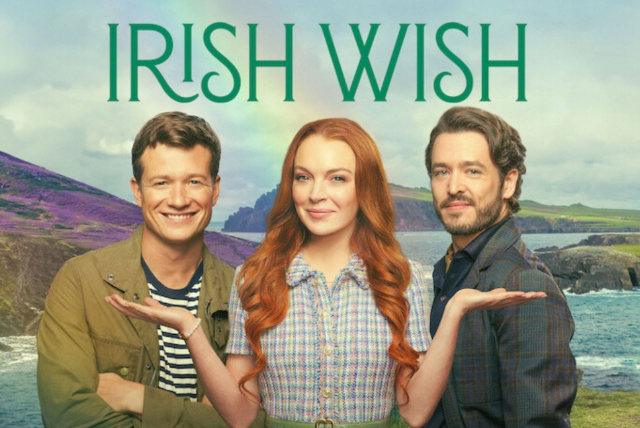Research reveals the best spots to place ads on Netflix

Advertisers should place ads before films over documentaries or sitcoms on Netflix, according to new research.
Kantar Media’s TGI data examined UK Netflix subscriptions and found 27% of users with an ad-supported subscription were “usually” watching films on the platform — the highest of any genre.
The next highest were serials, entertainment and documentaries, with a respective 18%, 17% and 15% of ad-supported viewers saying they typically watched this type of content.
Kantar’s data also revealed differences in viewing among ad-free and ad-supported subscribers.
Top five genres on Netflix
|
|
% of ad-supported Netflix users who ‘usually watch’ |
% of ad-free Netflix users who ‘usually watch’ |
| Films | 27 | 37 |
| Serials | 18 | 22 |
| Entertainment | 17 | 21 |
| Documentaries | 15 | 18 |
| Comedy | 12 | 16 |
Source: GB TGI February 2024
Analysis: Audience should still take priority
James Weinberg, executive director of media and product at T&Pm (formerly MSix & Partners), told The Media Leader that the difference between ad-supported and ad-free users was “thought-provoking”, but it was “not surprising” that films are viewed more heavily than other genres.
This was “starkly different” to linear TV, where films still feature on schedules but play a lesser role — something often down to usage rights and “the pecking order” involved in streaming platforms and monetised content taking priority.
Weinberg said it was “interesting” to see users without ads watching more films, pointing out a higher proportion of these may subscribe to other platforms like Sky Cinema, with “a decent percentage” of Netflix subscribers in the UK using the platform via their Sky subscription.
“I agree that advertisers should be targeting ad spots before films, especially if there is data to show that the adverts used are strongly aligned to the audience viewing,” he explained. “However, the same can be said across any strong, broadcast content which happens to be predominantly viewed on a big screen.”
Weinberg said he would always advocate an audience-first approach “ensuring that strong alignment takes priority”, rather than taking the broader targeting approach of looking at genres.
He added: “Genre or contextual targeting still plays a major role across both VOD and linear, but especially on linear TV, where audience or data-led targeting is less advanced.
“If we’re talking about streaming platforms, which are inherently digital and have a wealth of audience data, I don’t think we should be focusing too much on picking out films as a specific buying route. We would want to be around the content our audiences are, inclusive of films.”
Other considerations for Weinberg include the ability to geo-target to at least postcode level, attribution technology and measurement capabilities.
Distinct media habits
The differences in media habits between ad-supported and ad-free subscribers also applied away from usage on Netflix.
Kantar found that UK Netflix subscribers who chose an ad-funded tier were “significantly more likely” to be among the top fifth of consumers of radio, live TV and newspapers, sitting at 22%, 21% and 15% respectively.
Meanwhile, those who opted for an ad-free Netflix subscription were more likely to be heavy consumers of social media, cinema and the internet, at 23%, 17% and 25% respectively.
|
|
% of ad-supported Netflix users who are among top fifth of consumers of medium |
% of ad-free Netflix users who are among top fifth of consumers of medium |
| Social media | 18 | 23 |
| Cinema | 13 | 17 |
| Internet | 19 | 25 |
| Radio | 22 | 15 |
| Live TV | 21 | 13 |
| Newspapers | 15 | 10 |
Source: GB TGI February 2024
This divergence could partly be explained by differences in average age and other characteristics between Netflix standard and premium subscribers.
Trevor Vagg, head of customer success and insight at Kantar Media, told The Media Leader that ad-supported Netflix subscribers were 40% more likely than average to be “empty nesters” or older couples with disposable income and free time.
He said this meant the group is “more likely” to be familiar with ads on terrestrial TV or in newspapers and radio, and therefore view interruptions as less of an issue than younger counterparts.
Vagg added that, by comparison, those with an ad-free Netflix subscription were 37% more likely than average to be an adult to have “flown the nest”, namely those aged between 15 and 34, not married and not living with family.
For their media consumption, this demographic tended to watch shorter-form content and a wider range of shows and programme types — something that Vagg hypothesised meant they were “probably less tolerant” to having their experience interrupted by frequent advertising.
Ad bombardment
Vagg explained that while ad-free subscribers are not necessarily opposed to advertising, more than half (53%) report feeling “bombarded” by ads, due in part to their viewing habits.
He added: “It’s not surprising that they are happy to pay more to avoid ads and that they have higher expectations for the entertainment value of the ads they do see.”
More than half (56%) of those on a premium tier expected their advertising to be “entertaining” compared with 50% on a basic subscription.
In terms of whether ads were a “source of inspiration” for what they chose to buy, there was not much difference in the two types of subscribers. While 25% of ad-free subscribers agreed, 24% of ad-supported subscribers felt the same way.
Vagg stressed: “Precise segmentation of audiences is key to understanding the trends we’re seeing within video streaming.”
Netflix declined to comment.



